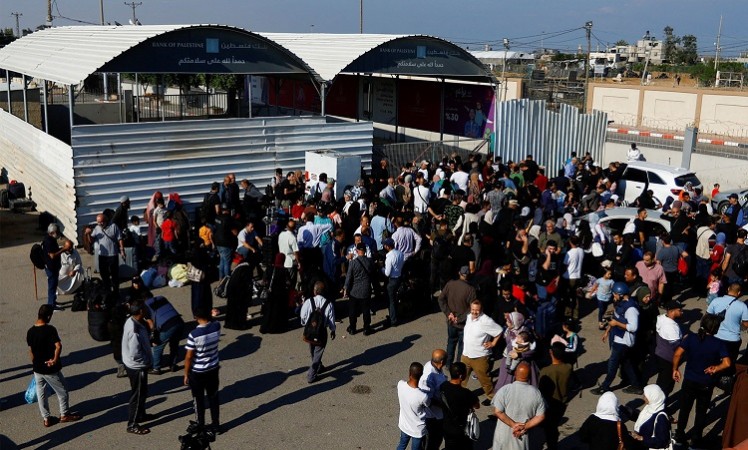
Israel's declaration of a humanitarian zone in Southern Gaza, specifically at Al-Mawasi, has sparked curiosity around the world. The move involves the provision of international aid to those in need, and its implementation follows a series of diplomatic negotiations involving key players such as Egypt, the United States, and other international partners, all aimed at establishing a secure area to aid the vulnerable population of Gaza.
The genesis of this zone can be traced back to a tragic incident, where a devastating explosion occurred at a hospital in Gaza City, resulting in the loss of hundreds of innocent lives. The Israeli Military was quick to disassociate itself from any involvement in the catastrophe, asserting that it was the result of a misfired Palestinian rocket.
In an effort to extend support and protection to the residents of Gaza City, the Coordination of Government Activities in the Territories (COGAT) utilized social media, sharing a map with a message that urged the residents of Gaza City to relocate to the south for their safety. They emphasized that Al-Mawasi would serve as a hub for international humanitarian aid, available as and when required. The Israel Defence Forces echoed this sentiment, underlining their commitment to safeguarding the lives of innocent civilians amidst the ongoing conflict.
But what exactly are humanitarian zones or corridors, and why are they established? In this article, we delve into the intricacies of these essential humanitarian mechanisms.
Defining Humanitarian Zones and Corridors
Humanitarian corridors, also known as safe passages, are formal agreements forged between parties involved in an armed conflict. These agreements designate specific geographic areas where safe passage is permitted for a predetermined duration. The primary purpose of these corridors is to facilitate the entry of humanitarian aid into the affected area or the safe evacuation of the sick, injured, or civilian population.
However, it's important to note that humanitarian corridors are not without their challenges and limitations. The success of these initiatives hinges on the commitment of the warring parties to adhere to the principles of International Humanitarian Law (IHL). IHL dictates the rules that govern the conduct of hostilities, emphasizing the importance of protecting civilian lives and ensuring that humanitarian assistance reaches those in need.
The Role of the International Committee of the Red Cross (ICRC)
The International Committee of the Red Cross (ICRC) plays a vital role in promoting and guiding the establishment of humanitarian corridors. Their stance on the matter underscores the responsibility of humanitarian organizations to provide protection and assistance to individuals affected by armed conflicts. Furthermore, the ICRC stresses that those engaged in the hostilities must uphold the tenets of International Humanitarian Law (IHL) to protect civilians and ensure the unimpeded flow of humanitarian aid to those requiring assistance.
Humanitarian zones and corridors represent a crucial lifeline for communities caught in the crossfire of armed conflicts. They embody the collective international effort to mitigate human suffering and uphold the principles of humanitarian law, ensuring that aid reaches the most vulnerable populations during times of crisis.
Former AP Videojournalist Yaniv Zohar Killed in Hamas Attack
President Biden's Diplomatic Mission to Tel Aviv Amid Escalation Concerns
The History of Palestine: From Ancient Times to the Modern State